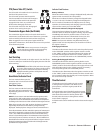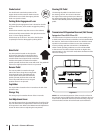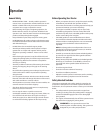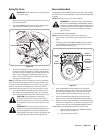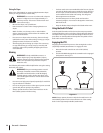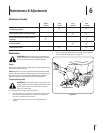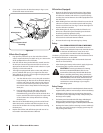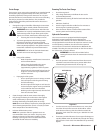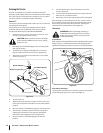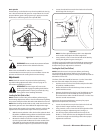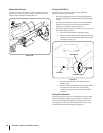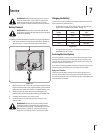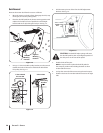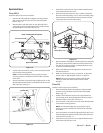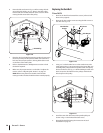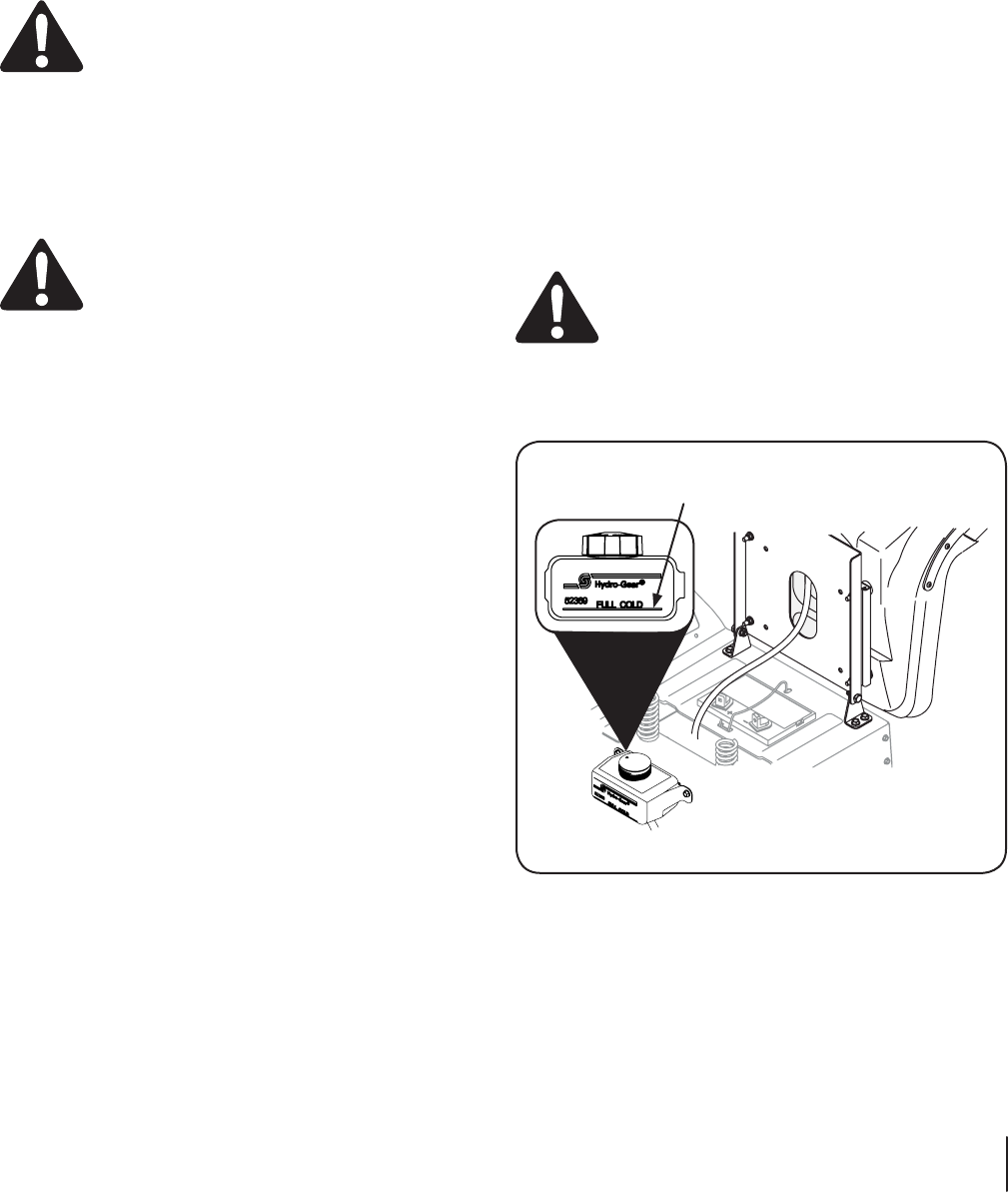
Section 6 — Maintenance & adjuStMentS
Removing The Tractor From Storage
Check the engine oil.
2. Fully charge the battery and inflate the tires to the
recommended pressure.
If drained before storing, fill the fuel tank with clean, fresh
gasoline.
4. Add clean, fresh fuel.
5. Start the engine and allow to idle for a few minutes to
ensure engine is operating properly.
6. Drive the tractor without a load to make certain all the
tractor systems are functioning properly.
Hydrostatic Transmission
Your zero turn tractor is equipped with dual integrated
hydrostatic pumps/transaxles that are sealed and are
maintenance-free. However, the Z-Force S60 and Z-Force S54
are equipped with a transmission oil expansion reservoir. Under
normal operating conditions, the oil level in the expansion
reservoir does not need to be checked and no additional oil is
needed. If checking the reservoir oil level om the Z-Force S60 or
the Z-Force S54, proceed as follows:
WARNING!
starting the tractor when the transmission oil is fully
cooled.
cap and the area around the cap to prevent debris from
Full Cold Line
Figure 6-3
2. Turn the reservoir cap counterclockwise to re-move, then
If necessary to add oil because of some type of leakage, use
a quality 20W50 motor oil and add only enough oil to bring
tighten.
Tractor Storage
If your tractor is not going to be operated for an extended period
of time (thirty days to approximately six months), the tractor
should be prepared for storage. Store the tractor in a dry and
protected location. If stored outside, cover the tractor (including
the tires) to protect it from the elements. The procedures
outlined below should be performed whenever the tractor is
placed in storage.
Change the engine oil and filter following the instructions
provided in the engine manual packed with this manual.
WARNING! Never store the tractor with fuel in the
tank indoors or in poorly ventilated enclosures, where
fuel fumes may reach an open flame, spark or pilot
light as on a furnace, water heater, clothes dryer, etc.
2.
a. To prevent gum deposits from forming inside
malfunction of the engine, the fuel system must be
either completely emptied, or the gasoline must be
treated with a stabilizer to prevent deterioration.
WARNING! Fuel left in the fuel tank deteriorates
and will cause serious starting problems.
b. Using a fuel stabilizer:
and recommendations.
Add to clean, fresh gasoline the correct
amount of stabilizer for the capacity
Fill the fuel tank with treated fuel and run the
into the carburetor.
c. Emptying the fuel system:
Prior to putting the tractor in storage, monitor
fuel consumption with the goal of running
the fuel tank empty.
Run the engine until it begins to stall. Use the
choke to keep the engine running until all fuel
in the carburetor has been exhausted.
Referring to the engine manual, drain the fuel
from the carburetor bowl.
Clean the engine and the entire tractor thoroughly.
4. Fully charge the battery, then disconnect the negative
cable at the battery to prevent possible discharge.
Recharge the battery periodically when in storage.
NOTE: Remove the battery if exposed to prolonged periods
of sub-freezing temperatures. Store in a cool, dry location
where temperatures are above freezing.
5. Lubricate all lubrication points.
NOTE: Use a pressure washer or garden hose is not
recommended to clean your tractor. They may cause
damage to electrical components, spindles, pulleys,
bearings or the engine. The use of water will result in
shortened life and reduce serviceability.
21



